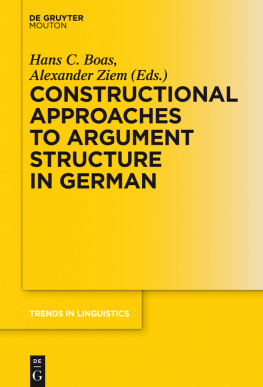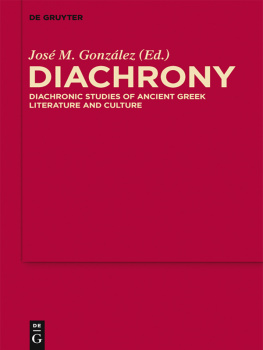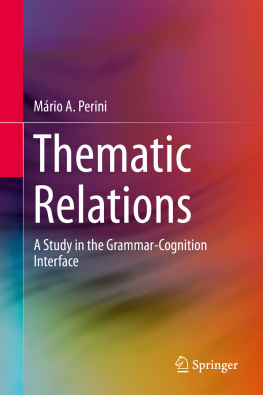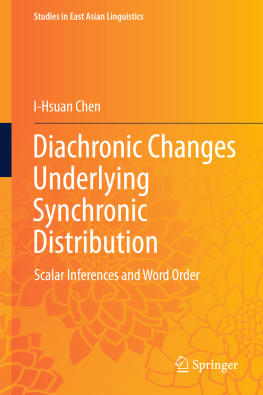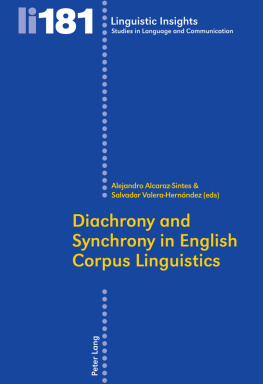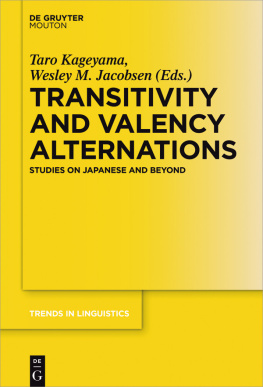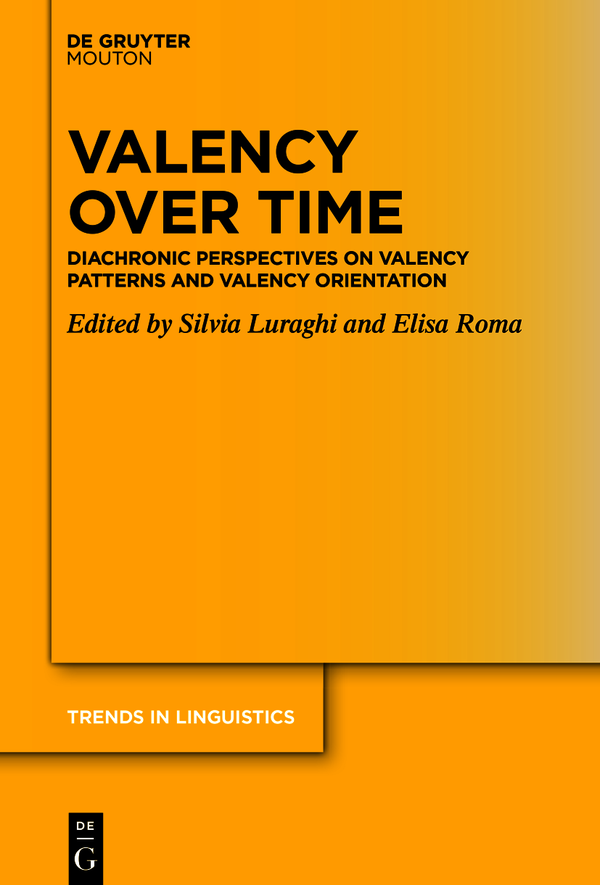Trends in Linguistics. Studies and Monographs
The Deutsche Nationalbibliothek lists this publication in the Deutsche Nationalbibliografie; detailed bibliographic data are available on the Internet at http://dnb.dnb.de.
2021 Silvia Luraghi and Elisa Roma, published by Walter de Gruyter GmbH, Berlin/Boston
This work is licensed under the Creative Commons Attribution-NonCommercial-NoDerivatives 4.0 International License.
This project has received funding from the Italian Ministry of Education and Research, grant n. 20159M7X5P_002 PRIN 2015 Transitivity and argument structure in flux, PI Silvia Luraghi (Pavia).
Introduction
In this book, we present a collection of papers devoted to verbal valency that share a common orientation by addressing this issue in a diachronic perspective, either discussing changes in the behavior of verbs or discussing verbal valency at different historical stages of specific languages.
Verbs and their semantic and syntactic behavior have long been at the center of linguistic research. This is not surprising: indeed, as remarked by Croft (2012: 2) A central part of the grammar of every human language is the encoding of events and their participants in a clause. For this reason, argued that the verb is the center of the petit drame staged in any given sentence.
Language specific and cross-linguistic studies approaching verbs and their constructions synchronically or diachronically abound, and it is impossible in this introductory chapter to account for decades of research developed within different theoretical frameworks. In what follows, we focus on two issues, since they are also the focus of the papers in this book, that is, valency patterns, especially as they have been investigated within the ValPaL project (see . Section 5 surveys the content of the papers collected in this book.
Valency in cross-linguistic research
The tendency for specific meanings to be instantiated by verbs that can be grouped into a limited number of classes based on the type and number of nominal constituents they tend to occur with, along with the possibility for certain verbs to undergo changes in this respect (e.g. to have active and passive counterparts), has raised the interest of linguists working in various theoretical frameworks. Among possible ways to capture such peculiarities of verbs, the notion of valency introduced by is perhaps the most widely employed.
The notion of verbal valency captures the inherently relational nature of verbs: as verbs denote events, they necessarily imply the events participants, i.e. the verbal arguments. For this reason, valency can be viewed as referring to argument realization. This provides a direct link to research on the syntax-semantics interface (Levin and Rappaport Hovav 2005), which regards argument realization as crucially determined by the meaning associated with specific verb classes. Such an approach immediately raises the issue how to distinguish between arguments and adjuncts. In fact, in Tesnires terms, valency is projected by the verb, and marks a sharp distinction between arguments (obligatory) and adjuncts (non-obligatory), which is often problematic (: 255256). Still, the notion of valency remains a useful tool for linguists, and has enjoyed steady popularity.
In cross-linguistic research, comparing valency patterns, valency alternations and valency changing operations has proven an extremely revealing practice, as comparison has provided evidence for the common intuition that certain verbal meanings tend to select similar patterns across languages. A major effort to make possible comparing verbs with the same meaning in different languages on a comparatively large scale is constituted by the Leipzig Valency Classes Project, or ValPaL (see attested coding frames were recorded for each basic verb. The database contains data for 80 verb meanings from 36 languages; additional verb meanings were added for specific languages, up to a total of 162 verb meanings currently included.
Problematic aspects of the original notion of valency are acknowledged by the ValPaL contributors. Concerning the distinction between arguments and adjuncts, for example, Haspelmath and Hartmann (: 50) write: for quite a few cases we did not have a unique way of distinguishing between arguments and adjuncts, and the ValPaL database is therefore not consistent in this regard. In certain cases, the ValPaL contributors pragmatically adopted a less strict view of the role of the verb as projecting its valency. This is the case when Haspelmath and Hartmann (2015: 45) claim that:
The terms in [a-e] all have basically the same meaning
complementation e.g. Quirk et al. (: 106971)
subcategorization
argument structure e.g.
government model (Russian model upravlenija)
clause blueprint (German Satzbauplan)
In fact, the terms mentioned above all have the same referent, i.e. the constituents that verbs tend to occur with, but to say that they have the same meaning is somewhat farfetched. Let us for example consider the notion of argument structure as understood in the framework of Construction Grammar. According to ), the two approaches, i.e. the verbal valency approach and the constructions approach, may be seen as complementing each other.
Notably, this has implicitly been acknowledged by Goldberg as well, when she discusses constructional homonymy. Indeed, Goldberg (2006: 38) acknowledges the possibility of homonymy and stresses the relevance of the verbs meaning, along with the meaning of co-occurring arguments. She writes:
In fact, there do exist instances of constructional homonymy: a single surface form having unrelated meanings. In order to identify which argument structure construction is involved in cases of constructional ambiguity, attention must be paid to individual verb classes. In fact, in order to arrive at a full interpretation of any clause, the meaning of the main verb and the individual arguments must be taken into account.
In practice, this amounts to saying that homonymous constructions are disambiguated in conjunction to the verbs meaning and the meaning of the NPs that function as fillers. Hence, following Goldberg (expression is the result of integrating the meanings of the lexical items into the meanings of constructions.
In spite of these caveats, the ValPaL database provides a solid foundation for research on verb classes, as it allows cross-linguistic comparison and highlights common tendencies and discrepancies in the coding of verbal arguments based on the verbs meaning. The publication of the ValPaL data has had an impact on further research on verb classes, valency patterns and argument structure constructions, and also provided a foundation for studies on transitivity scales (e.g. ) discussed below.
Valency and transitivity
Since .


